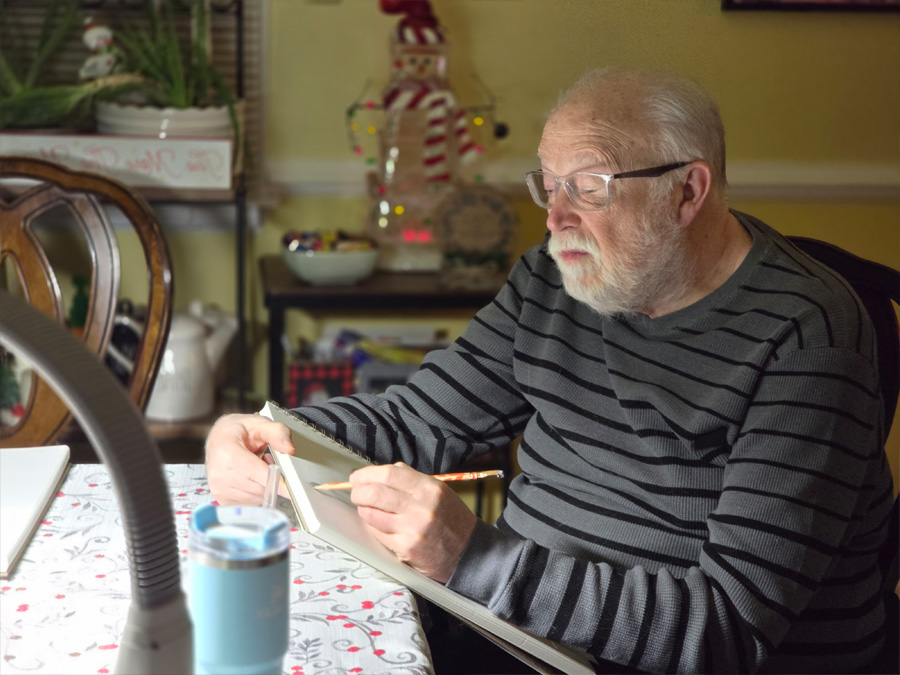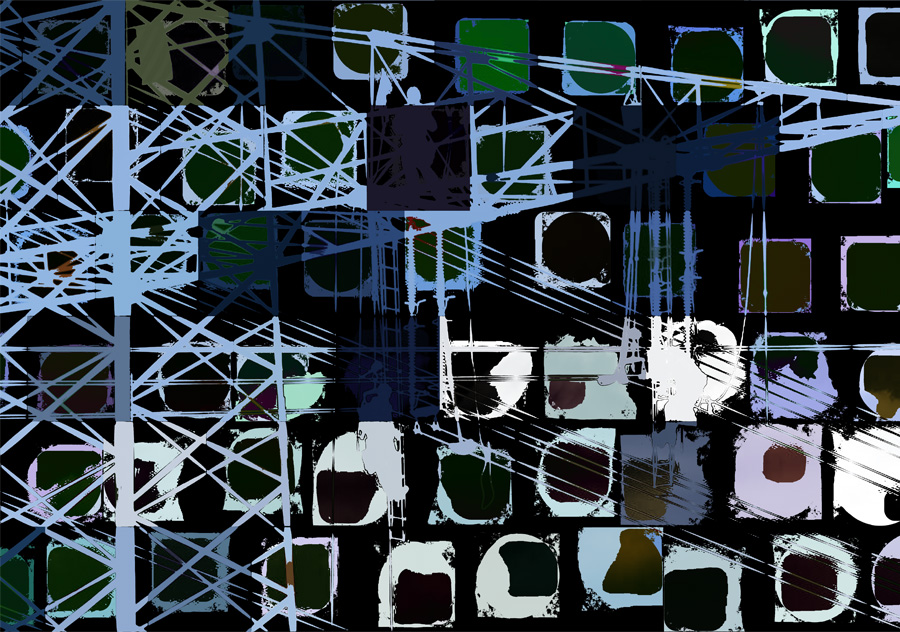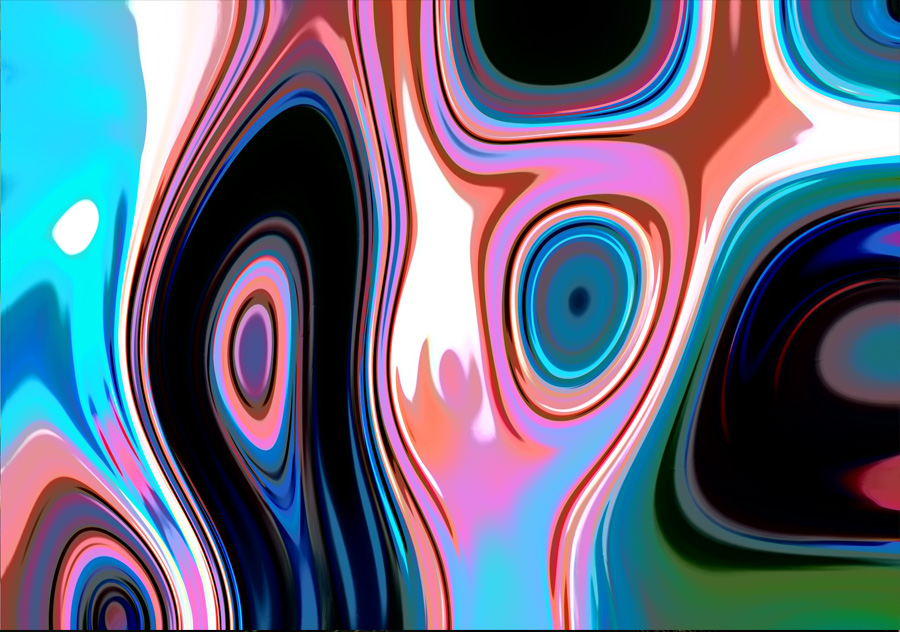About me
Who is Joseph Perryman?
I am an award-winning artist and teacher whose illustrations have appeared in various publications, print collateral and advertisements. I have developed websites and content for Fortune 500 companies and sold fine art paintings and drawings through galleries.
For sixteen years I taught and developed content for classes at Purdue University Calumet in the Computer Graphics and Information Technology Department and sold digital paintings at the Tall Grass Gallery in Park Forest Illinois.
Several years ago I stopped teaching so that I could devote more time to creating art. Going forward, I plan to use computers for most of the preliminary work, then rendering the final pieces with traditional tools.

Artist statement
My work focuses on strong composition, dynamic shapes, and intriguing color harmony. I try to distill my subject into the strongest possible visual statement— something that compels my viewers to see what I see and feel what I feel. I work in various styles, sometimes very abstract, sometimes highly realistic, choosing the most appropriate one for the project at hand; the one that best communicates what I am trying to say.
I like variety. Some artists like doing the same thing over and over. I don’t. I want to be challenged. I want my work to be a visual representation of what I am feeling today, not yesterday, not tomorrow. Sometimes I want to whisper; sometimes to shout. I am not a one note song and I want others to see it. To feel it. And for one brief moment, to see the world through my eyes.
There is recognizable content in most of my work, usually the result of careful planning. I find that viewers respond better to things that they can easily relate to, something that triggers a memory. Other times my work is so abstracted that nothing is recognizable. Just some shapes, values, and colors put together in an interesting way. This is my experimental work. I create it in a zen-like way without much thinking. I just let it flow. I want viewers to connect to the image in a visceral way, like they do to instrumental music—people recognize a sad song when they hear it; they don’t have to be told that it is sad. I am not trying to communicate a deep concept or profound truth; I am simply trying to get them to feel what I feel about a subject.
Over the years I imagine that I have used practically everything you can use to make art. These days I generally use acrylics or collage when I am working traditionally, or Procreate when I am painting or drawing digitally. I use computers for the vast majority of my preliminary work. I find them efficient, powerful tools that will allow me to create art even as my vision fails and my arthritis worsens.
Regardless of how my work is made, I want it to be sophisticated and intelligent. I want my work to respect the past and build on it. I admire strong drawing skills and work hard to develop mine. I like to see strong, simple design in a painting. I want every single design choice to reinforce its concept. I want there to be ideas in my paintings, not just any ideas, but ones worth thinking about. I don’t care to create pretty pictures. I want to create art with conceptual density and layers of interest. Art that engages the viewer for many years to come.

Bio
Like most artists, I have drawn and painted for as long as I can remember. My mother, also an artist, encouraged my interest and nurtured my development. I went to summer art camps and finished the Art Instructional School's correspondence course while I was still in high school. After high school I went to Purdue for a few years to build a broad educational base before attending the American Academy of Art in Chicago. After graduation I worked as a graphic designer and illustrator in Chicago.
Unfortunately I developed severe allergies to art materials (this was before personal computers) and had to switch careers. I went back to Purdue and got a degree in Information Technology. I spent many years doing general programming, switching to web development at the first opportunity. I am now retired, pursuing my first love: fine art.

NWI Times Interview
Q.
Tell me about yourself. Where do you live, how long have you lived in this area?
A.
I have lived in this area (Indiana) for most of my life. We moved to Gary in the ‘60’s, then to Highland in 1972. In 1985 I bought a house in Hammond. I have now come full circle and am living in the house in Highland that I grew up in.
Q.
Where did you graduate from?
A.
Like most artists, I have drawn and painted for as long as I can remember. My mother, also an artist, encouraged my interest and nurtured my development. I went to summer art camps and finished the Art Instructional Schools correspondence course while I was in high school at Highland High School. After high school I went to Purdue Calumet for a few years to build a broad educational base before attending the American Academy of Art in Chicago. After graduation I worked as a graphic designer and illustrator in Chicago.
Unfortunately I developed severe allergies to art materials (this was pre–computers) and had to switch careers. I went back to Purdue and got a degree in Information Technology. I spent many years doing general programming, switching to web development at the first opportunity. During that time I worked in IT at the Federal Reserve Bank of Chicago and got my MBA from Depaul University.
Q.
Are you a full-time artist, or what is your other employment?
A.
I am a full time artist now, but for ten years I taught and helped develop curriculum in the Computer Graphics department at Purdue Calumet.
Q.
Tell me a little bit about your art—what inspires you, how would you describe your style, etc.?
A.
I like a wide range of things and my work reflects that. Ideas come from everywhere—nature, other people’s work, both past and present, and even dreams. I am more interested in creating something with strong composition that showcases exciting shapes and colors than I am in any particular subject matter. My style is eclectic; it shifts with what I have to say.
Most of the art I create these days is digital, but I still enjoy using traditional materials and often add images created with them into my digital work. I always try to use the best tool to express what I have to say. This blend of approaches often results in an image with a distinct visual quality that would be hard or impossible to create in any other way.
Q.
Tell me a little bit about this exhibit (Eclectic) in particular: How did you select the pieces?
A.
This exhibit is the culmination of several years of experimenting with digital art tools. I wanted to see just how useful these tools could be in creating the type of work that I do. As a result I created hundreds of images in the various styles I enjoy. The works on display are some of my favorites.
Q.
What do you want people to take away from this exhibit?
A.
Primarily I hope they enjoy the work. Additionally, I want to expose them to what can be done digitally. These days its often hard to tell whether an image was created with a pencil and paper or a stylus and pixels and I think that some people will be surprised at just how little difference there is.
read the complete article
